The Extended Ghorepani Trek (II), Annapurna Conservation Area – Nepal
Ghorepani Trek, the third trekking day
Short Description: We climbed from Upper Ghorepani to Deurali Pass, and then we descended to Ban Thanti. We abruptly continued the downhill to a tributary stream of the Bhurunngdi Khola Valley, from where we constantly hiked up to Tadapani. Further on, we walked along a contour line to Ghandruk, where we stayed overnight.
Long Description.
During the night, it was less than 10C degrees in my room, but I slept like a princess in my dawn sleeping bag. When I woke up, I watched the sunrise over Annapurna South from my room. Then, I went downstairs for a light breakfast – just porridge with honey to get a bit of energy. At 8 a.m., we were ready to go and planned to reach Ghandruk the same day (a plan that I agreed to).

Ghorepani Trek: going up from Ghorepani to Deurali Pass (the Dhaulagiri Himalayan Range in the background)
From Upper Ghorepani, we climbed endless stone steps until we reached an intermediary peak full of colorful prayer flags. We took a break on top of the peak which was just across Poon Hill (where we had been the previous evening). From the peak, we descended through a forest with crooked trees and headed toward Deurali Pass (3180m altitude). When we arrived there, we took a snack break while other trekkers were already sitting at the terraces arranged in front of the lodges. After a while, a caravan of loaded-down donkeys slowly passed by and headed toward Ghorepani.
From Deurali Pass, we went down along a valley with waterfalls, rainbows, small chortens, and buffaloes. We continued along other stone or wooden steps until we reached Ban Thanti hamlet (3090m altitude). I would have liked to sit and have lunch there at one of the terraces by the river. But Salia convinced me to continue through the woods for another half an hour because he knew another good place.
We stopped at the Trekkers Sanctuary Lodge (2660m altitude), from where we had a new, breathtaking view of Annapurna South. I ordered chicken spaghetti even though it wasn’t lunchtime yet. I was very hungry after the long hike and we still had more to go by the end of that day.
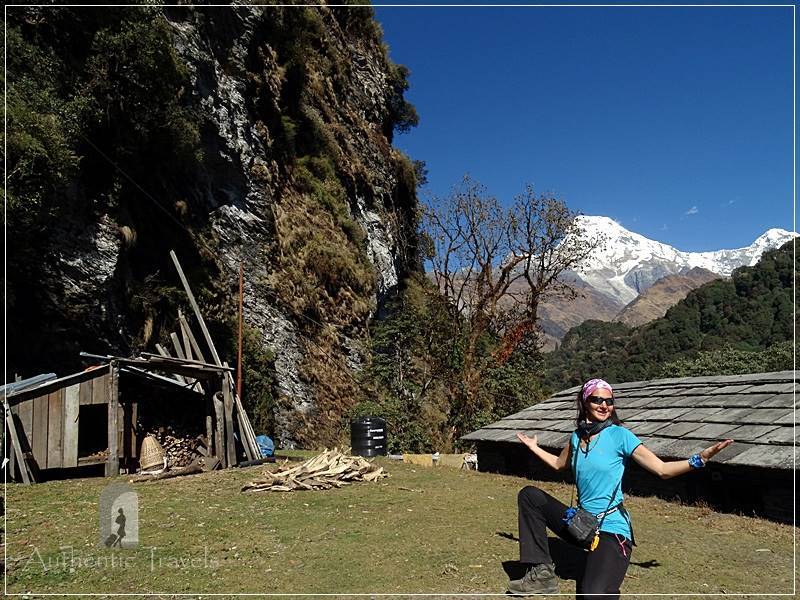
Ghorepani Trek: going down from Ban Thanti to Bhurungdi Khola (valley) – lunch break at the Trekker’s Sanctuary Lodge (2660 m alt.)
From the Trekkers Sanctuary Lodge, we went down to the Bhurungdi Khola Valley along a steep footpath. When we reached the bottom of the valley, we passed a stone bridge and a Chinese guy who was cooking soup by the river. After we crossed the river, we started a steep uphill hike toward Tadapani. I climbed unceasingly, avoiding the stone steps as much as I could, and always chose a narrow footpath parallel with the steps (it was less demanding).
I waited for Salia at a chaitya (pyramidal construction) made of stones in a small pass before the next village. From there, we reached Tadapani (2630m altitude) along a contour line in less than ten minutes. Tadapani was a small colorful village with a tiny central square. Most of the lodges faced the square but had also back terraces overlooking the Himalayan peaks – Annapurna, Hunchuli, and Machhapuchhre.
By noon, we left from Tadapani and went toward Ghandruk. We walked through a forest of rhododendron trees – unfortunately not in bloom at that time of the year (November). But there were a lot of big fat monkeys (lurung) in the tress, swinging from one tree to another.
After passing the rhododendron forest, we descended countless stone steps until we reached Baihisi Kharka hamlet with few houses lining up along the trail. There, I filtered water for drinking from a local well, and then we continued through the rhododendron jungle. We constantly went down and passed waterfalls, steep steps, and over-loaded porters who hardly walked up or downhill carrying big, heavy cargo.
By dusk, we finally arrived at the first whitewashed houses in Ghandruk (1940m altitude) – the largest village in the Modi Khola Valley. We went downhill through the village until we reached the Meshbrom Guesthouse, where I occupied the last empty room – with three beds and a private bathroom (cold shower, though).
In the evening, I had my favorite garlic soup, fried chicken with French potatoes, rice pudding, and a hot mint tea. While eating my dinner, I was admiring the Himalayan view through the smoky-colored window of the dining room. Outside, blinking colorful lights hung from the eaves of the house creating a Christmas atmosphere.
After dinner, a group of twelve trekkers from the Netherlands celebrated the birthday of one of the women in the group. There were several power cuts, the landlord brought candles, but the trekkers from the Netherlands continued to celebrate drinking beer no matter what had happened. Suddenly, the group’s guide brought a big pink cake with small candles for the woman’s birthday. The porters filmed the scene excitedly when everybody sang ‘Happy Birthday.’ They were charmed by the party that eventually ended with a series of dances between the Nepalis and the Dutch.
Ghorepani Trek, the fourth trekking day
Short Description: I walked through Ghandruk, and then we went down toward Kimrong Khola Valley, where we crossed a suspension bridge and abruptly climbed to Chinu. In the afternoon, I enjoyed a royal bath at the local hot springs (the only hot shower in one week).
Long Description.
In the morning, I enjoyed a generous breakfast including eggs, gurung bread with honey, masala tea, and the customary milk coffee. While I was having breakfast, a Tibetan artisan displayed his handicrafts in the courtyard of the lodge.
He attracted me with beads made of Tibetan turquoise, bracelets made of coconut, and his family’s ancient bracelet with precious stones – all of them very beautiful but too expensive and heavy. He told me the story of Tibetans who lived in exile in Nepal since the sixties, and how the Nepali kings had accepted and integrated them into their kingdom. Even though I didn’t buy anything, the Tibetan thanked me for listening to his story with patience.
After breakfast, I had a short walk through Ghandruk – the oldest and most developed Gurung village in the Modi Khola Valley. Ghandruk lay among various terraces, had two small museums, and even a so-called German bakery. The whitewashed houses in the village were made of stone and had blue window frames (rather wooden shutters with decorative carvings instead of normal glass windows). Many households were often garnished with corncobs hanging from the eaves of the houses to dry for the winter season. The woman from the Gurung Museum impressed me with her tourism and museography diplomas.
When I returned to the lodge, we started the hike down toward Chinu village. We descended among traditional households, agricultural plots on terraces, and women winnowing the millet. When we saw a collapsed house, Salia told me that his house in Gorkha had collapsed during the earthquake the previous year, too. So sad!
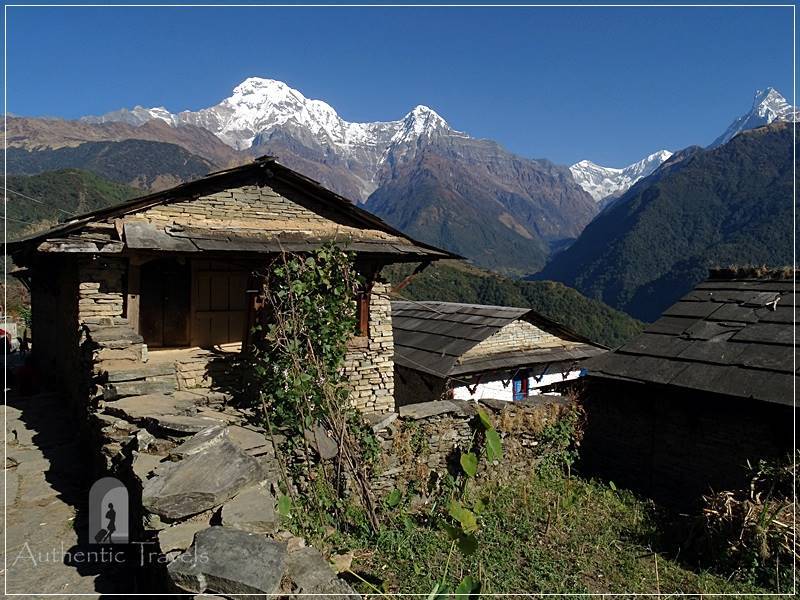
Ghorepani Trek: Ghandruk – traditional Gurung house with views to Annapurna South Peak and Modi Khola (valley)
On our way to Chinu, we met Thomas – the Lithuanian I had met at the Evergreen Ecolodge in Sauraha, Chitwan. He came from the opposite direction and told me he had trekked the Annapurna Base Camp in seven days instead of ten (the average duration of this trek). As usual, he was trekking by himself and listening to music on his headphones.
We continued our descend among authentic hamlets until we reached the Kimrong Khola Valley. In the valley, we crossed a suspension bridge over a canyon with enormous waterfalls. Next, we abruptly climbed the last pack of stone steps to Chinu (1780m altitude).
Chinu was a small village standing a few hundred meters above the Modi Khola Valley. The moment we reached Chinu, we were officially on the Annapurna Base Camp Trek. The small central square in Chinu was, in fact, the garden full of flowers of the Namaste touristic complex. Everything and anything happened there. You could find from Tibetan jewels, T-shirts and cloth caps with Himalayan landscapes to biscuits, energy drinks, and maps with trekking routes.
For lunch, I quickly had tomatoes macaroni with a bit of yak cheese. Next, I insisted to Salia on leaving for the hot springs situated at the bottom of the valley. I paid a small fee at the ticket counter at the departure point toward the hot springs. Then we descended to the bottom of the Modi Khola Valley and hurried up toward to the hot springs.
When we reached the valley, three pools with warm water lined up next to the cold river. They had warm water, respectively hot and very hot water. The local guard asked me to have a shower first (with hot water, finally!), and only afterward was I allowed to enter the pools. I didn’t have a swimming suit, so I entered the pools dressed only in my underwear.
I immersed myself in the warm water in the first pool for two hours, while Salia was happily chatting with the local guard. Meanwhile, the pools got packed up with both Nepalis and trekkers. I moved into another pool when Noelia – the Spanish girl I had met in Ulleri, showed up. She entered the pools completely dressed because she didn’t have anything else to wear. She told me that she was planning to trek the extended Ghorepani Trek passing through Landruk for the next two days. After completing the trek, she was going to volunteer at a Montessori School in Pokhara. Then, she was going back to Kathmandu, and I found out that we were both flying back to our countries the same day.
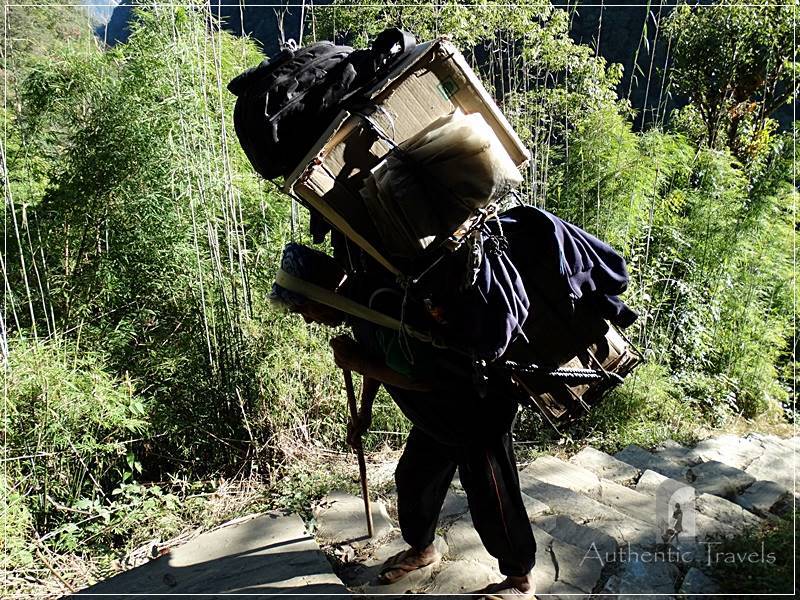
Ghorepani Trek: from Jhinudanda back to Nayapul – that’s how a real porter looked like while working. The load was bigger than him.
At dusk, we came back to Chinu and I sat with two cyclists on the terrace of the lodge for dinner. They had left their bikes in Pokhara and were trekking the Annapurna Base Camp together. Thomas was from Slovenia and he had been cycling the Silk Road for five months. In New Delhi, India, he had joined forces with Ben Antony from Luxembourg. From there, they had pedaled together to Pokhara in Nepal. Thomas had been to Nepal two years before and the country had seemed dirty to him then. Nevertheless, after crossing India, Nepal seemed very clean. Ben had just completed his university studies and he was exploring Southeast Asia for two months. Both of them were passionate travel bloggers and wrote a travelogue on their blogs every day.
Ghorepani Trek, the fifth trekking day (and the last one)
Short Description: We left Chinu and continued along the Modi Khola Valley. We gently hiked up toward Siwai, from where we descended along the bus route and passed through Syauli Bajar and Chimrong until we reached Birethanti. We completed the Ghorepani Trek at the taxi stand in Nayapul.
Long Description.
I woke up early in the morning and when I looked out of the window, I saw Annapurna South still surrounded by stars. For breakfast, I had eggs and Gurung bread with honey, the customary masala tea, and milk coffee. I said goodbye to the cyclists, Thomas and Antony, and we agreed to keep in touch in the future.
We descended from Chinu to the suspension bridge over the canyon (the one we had crossed the previous day). From there, we climbed abruptly and in Samrung we chose the route parallel to the Modi Khola Valley. We passed by the new bridge toward Landruk and walked along the eastern side of the valley until we reached Kyume. There, a trail went to Ghandruk (from where we had come the previous day) but this time we chose to go to Siwai, from where we were supposed to have a bus to Birethanti.
We passed a herd of goats, crossed another suspension bridge over a small river, and reached Siwai. Unfortunately, a bus already full of people was just leaving. A Russian trekker asked me if we would join his group for a jeep ride directly to Pokhara (8 persons in a jeep). I had paid already for a taxi from Nayapul to Pokhara, so I wasn’t interested in his offer. Therefore, I sat down at a terrace in Siwai and had the last chicken spaghetti on the trek. Finally, I decided to walk for another ten kilometers to Nayapul. Salia was not very happy to hear that because he had to carry my backpack for another three hours. He complied with my decision eventually, even though he criticized the jeeps passing by that left a thick cloud of dust behind.
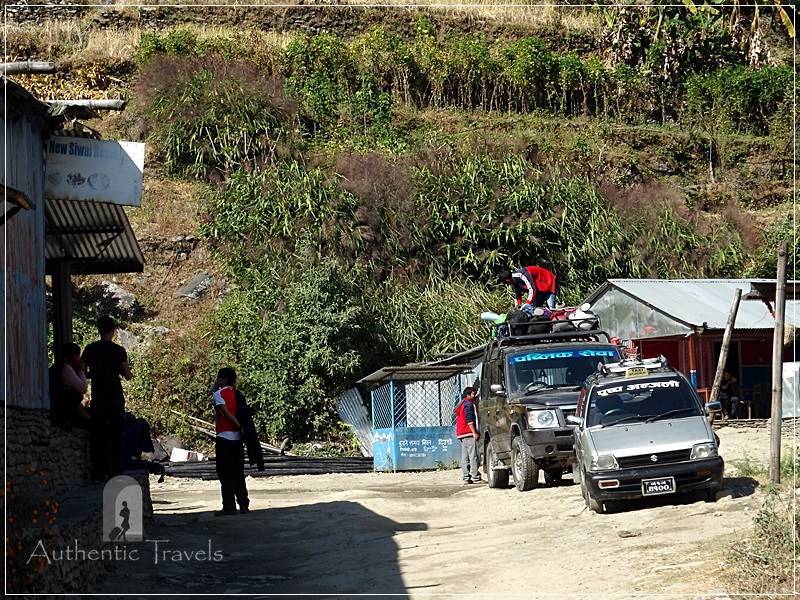
Ghorepani Trek: Siwai – the jeep/bus park. Normally, it was the end of the trek, but we continued to walk down to Nayapul for another 7-8 km
The dirt road to Birethanti was a continuous downhill and passed through the picturesque villages of Syauli Bajat, Chimrong, and Lamakhet. We could see Maccapucharee (the Fish Tail) behind us all the way to Birethanti. In Birethanti (1025m altitude) we stamped my trekking permits for the last time. From there, we were in the parking stand in Nayapul in half an hour. There, Salia quickly set up a taxi ride that brought us in front of the Twin Peaks travel company in Pokhara.
At the travel company, I paid the rest of the money we had agreed on for the trek. I gave a good tip to Salia who gratefully thanked me putting his hands together and saying ‘Namaste.’ He accompanied me to the Lotus Inn Hotel (where I had stayed before) and carried my backpack for the last time. After we said goodbye to each other, I suddenly started missing him. He was a guide with such a positive and caring energy.
It was not a feeling hurt that he left, but rather joy and gratitude because he had been my guide for five days. Even if we hadn’t talked much, he knew how to understand people without saying too many words. When I was thinking of him, I felt my heart going up into my throat. At the same time, I had a sweet sensation in my stomach. It was that feeling you have when meeting a great person with whom you connect despite language barriers. The following day, I hesitated whether to go or not to the travel company and ask for Salia’s phone number. I was hoping maybe I would see him again when I was going to Gorkha.
The Extended Ghorepani Trek (II) is the continuation of the first travelogue about Ghorepani Trek, Annapurna Conservation Area, Nepal. You can find the version in Romanian at ‘Ghorepani Trek, Aria de Conservare Annapurna, Nepal II’. And here are all the Travelogues from Nepal (x12).
Have you been to Nepal or plan to go there? Leave a comment below this post and tell me what you liked in Nepal or what you want to see there.
Want to subscribe to my travelogues? Just leave your email in the subscription form below, and you’ll be notified when I publish a new post.
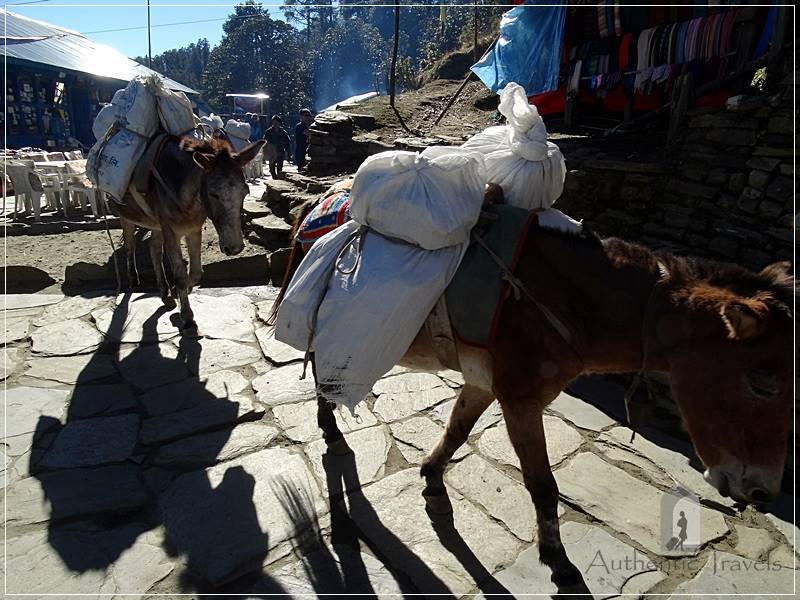
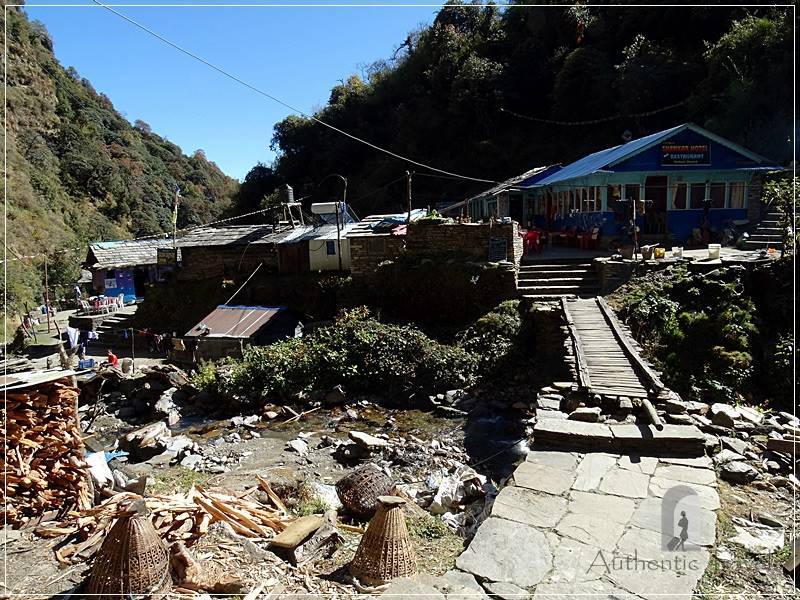
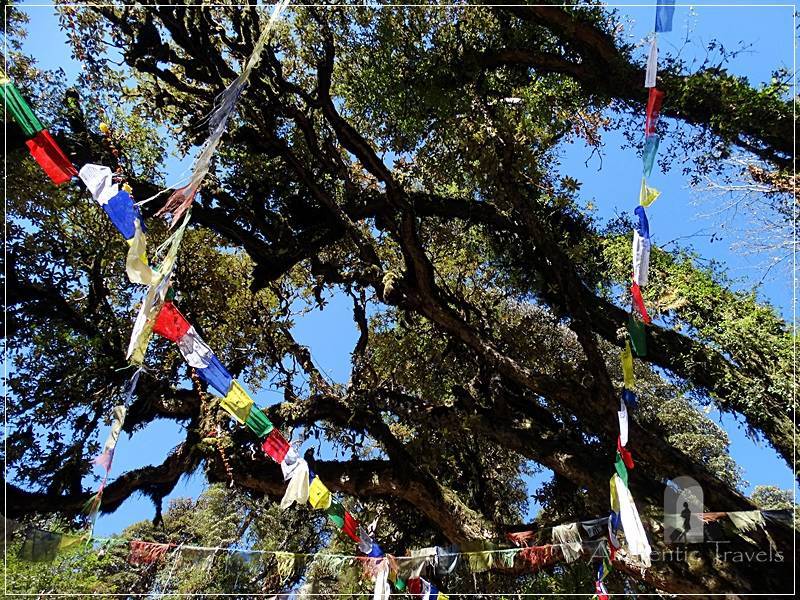
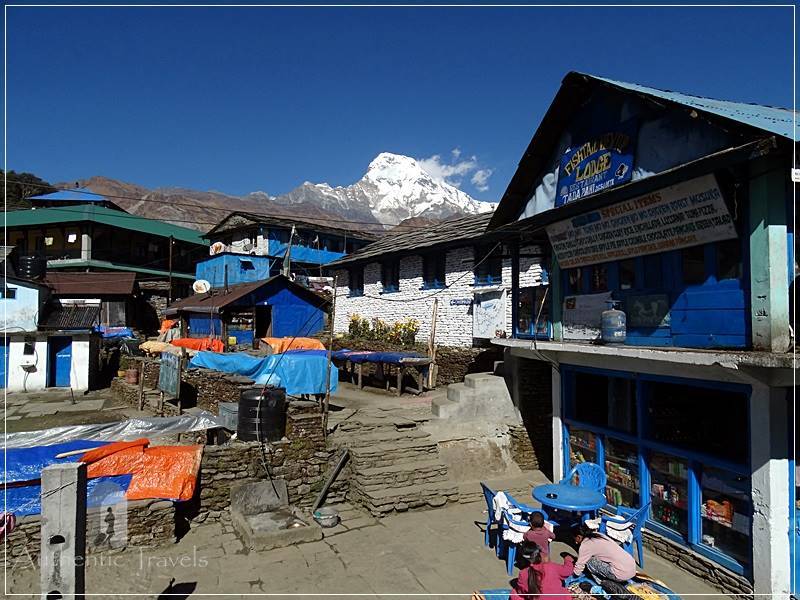
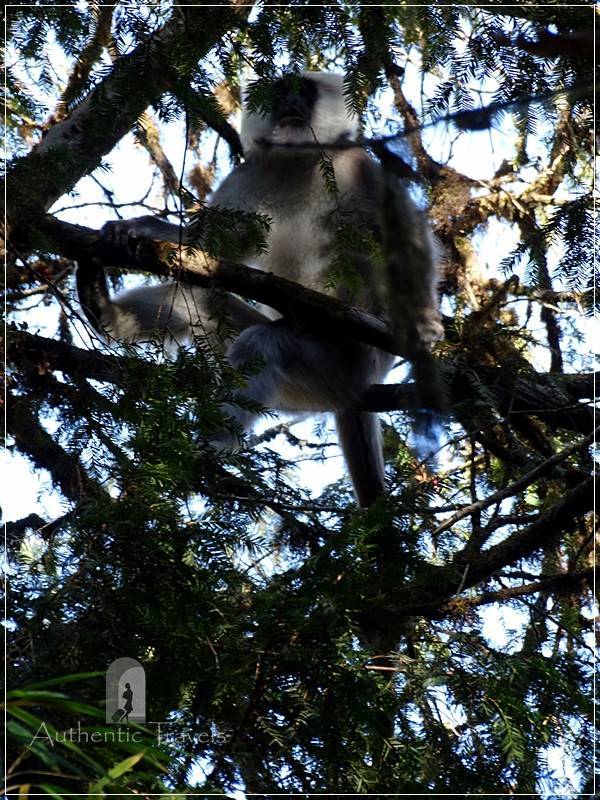
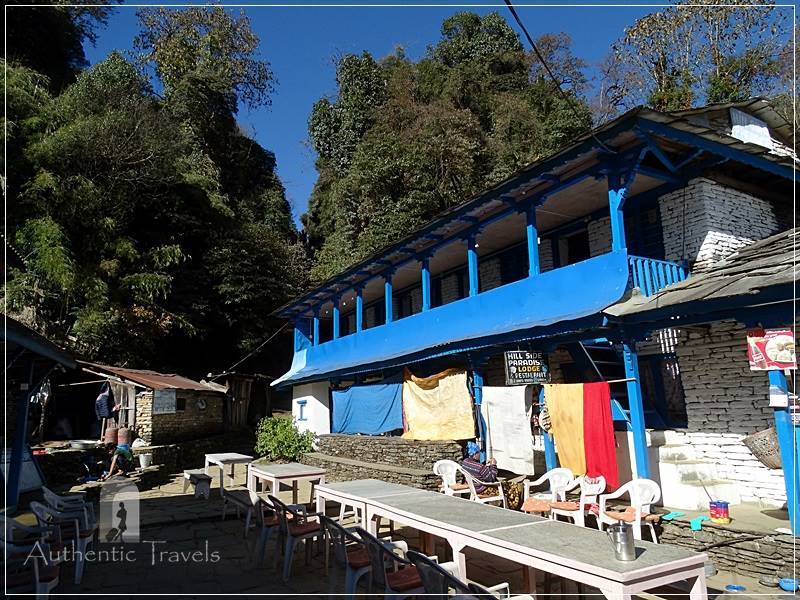
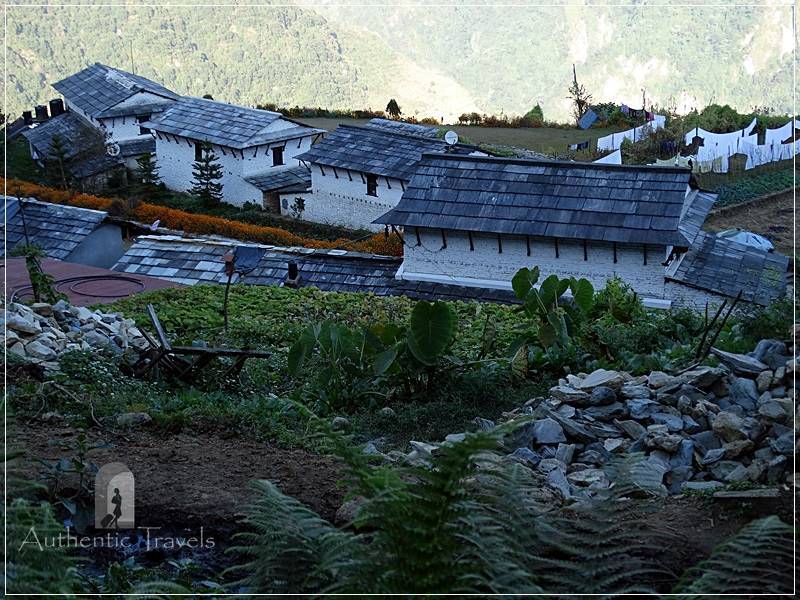
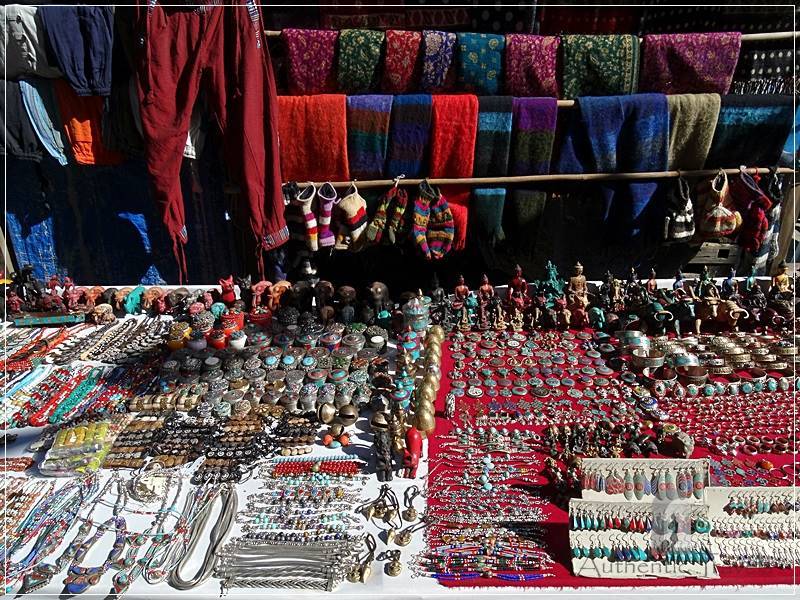
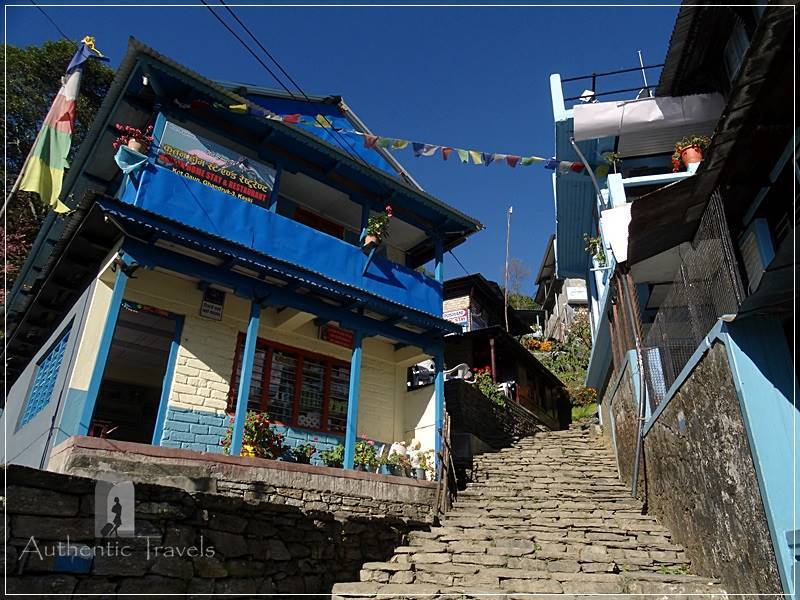
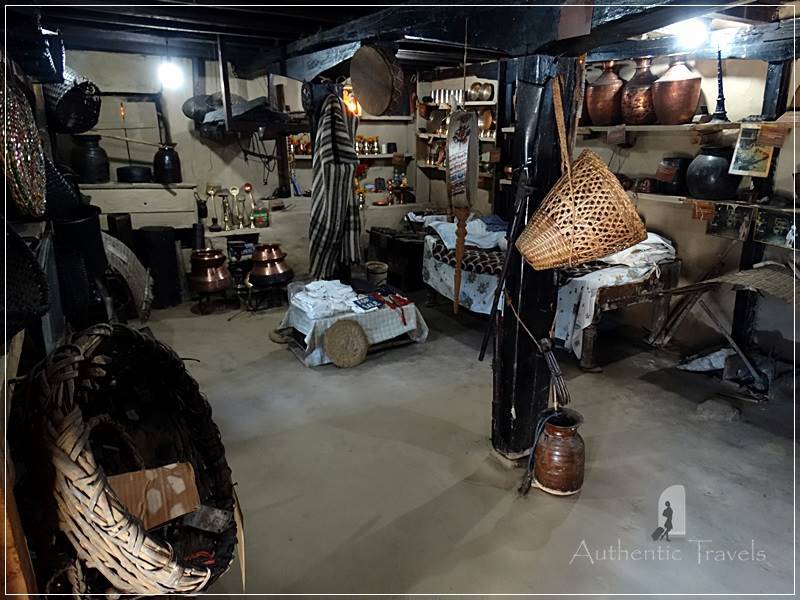
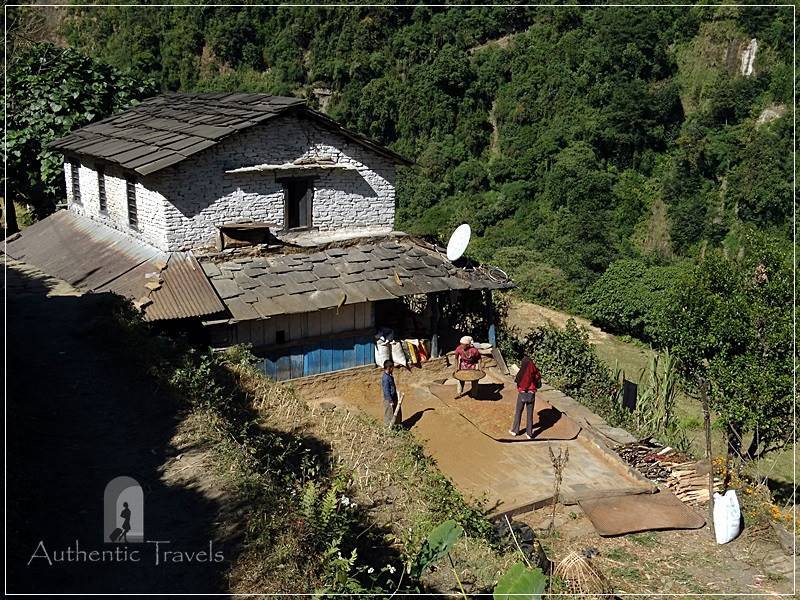
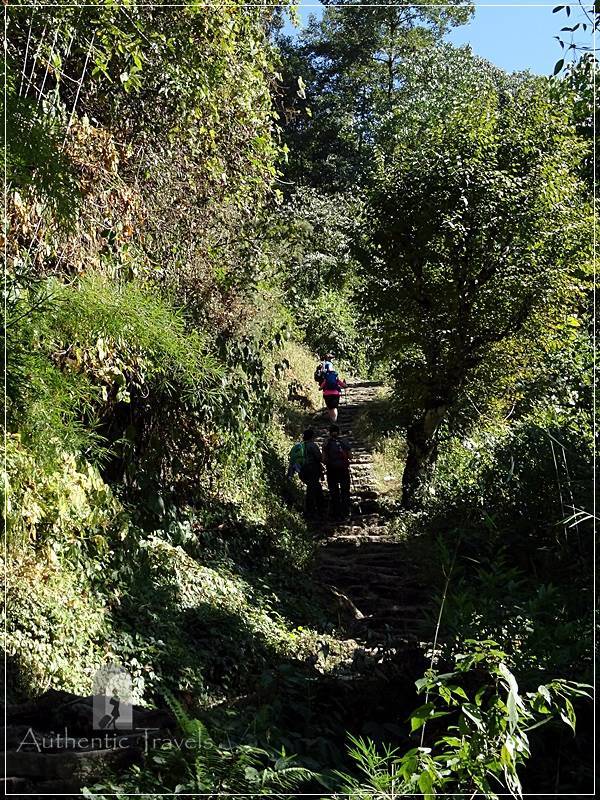
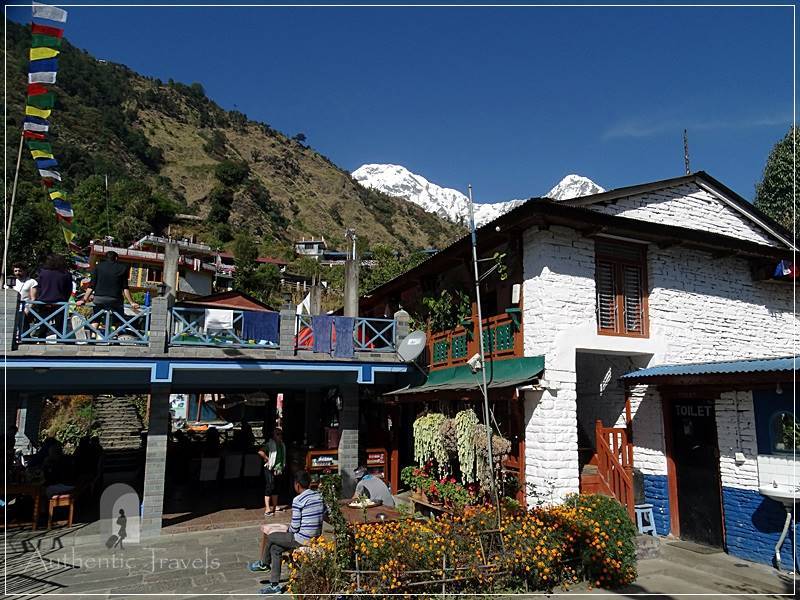
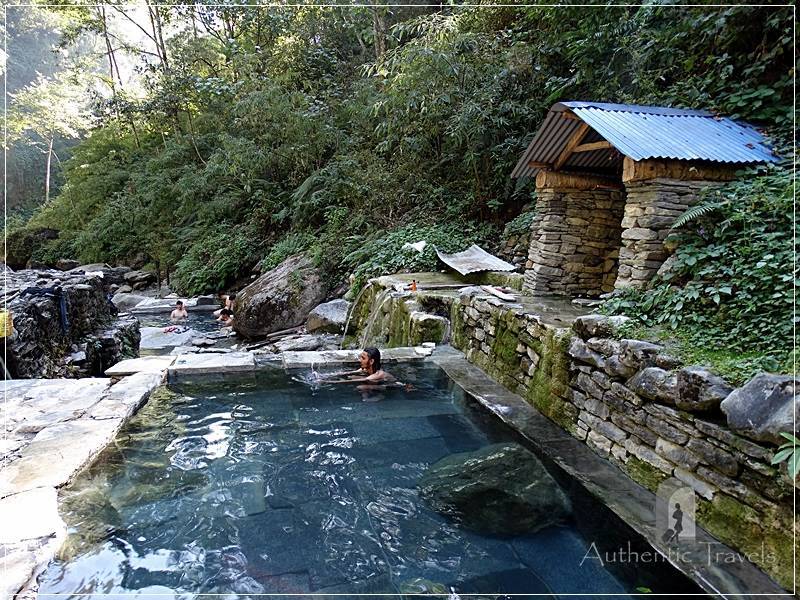
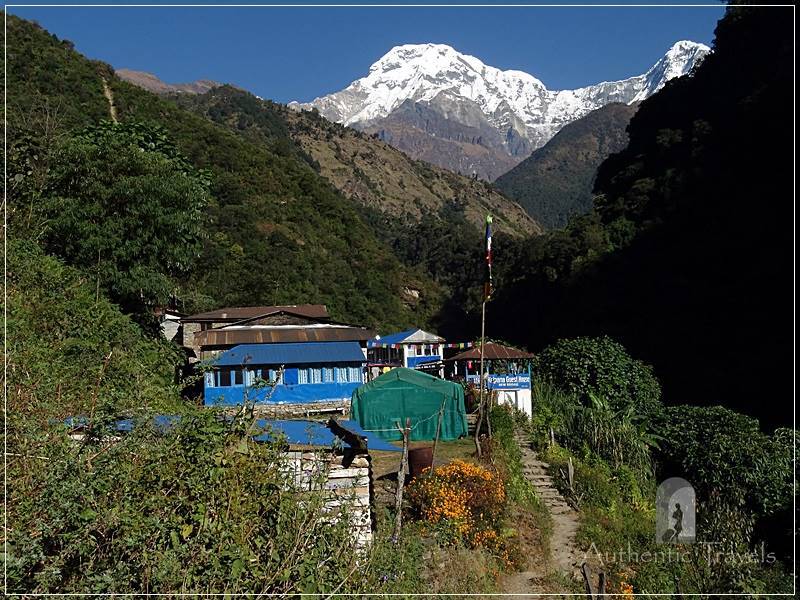
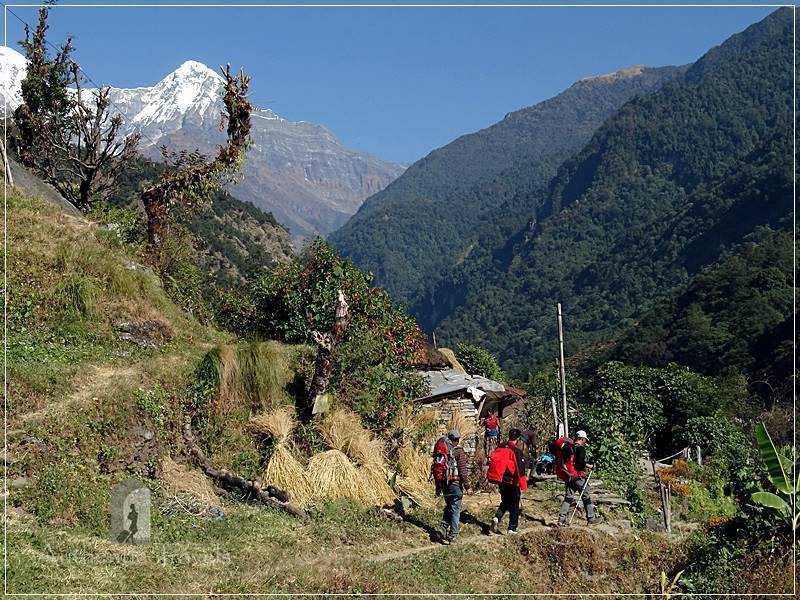
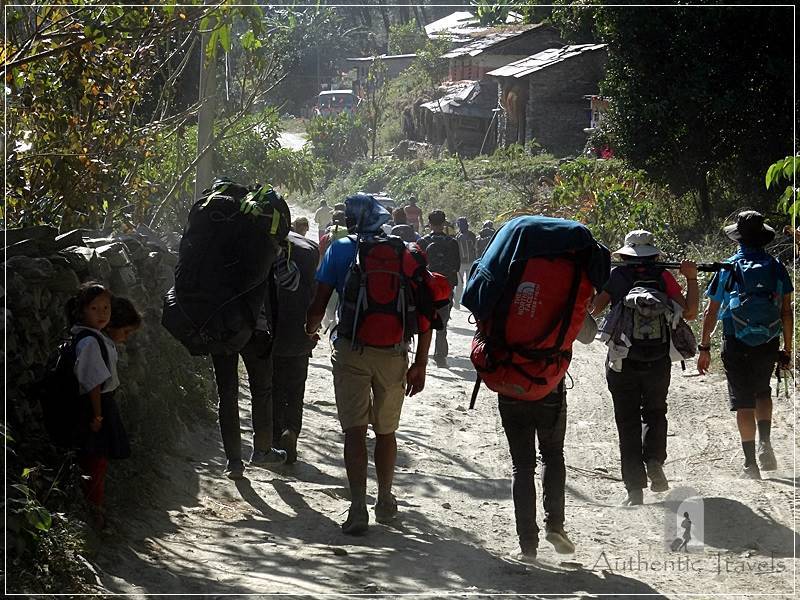
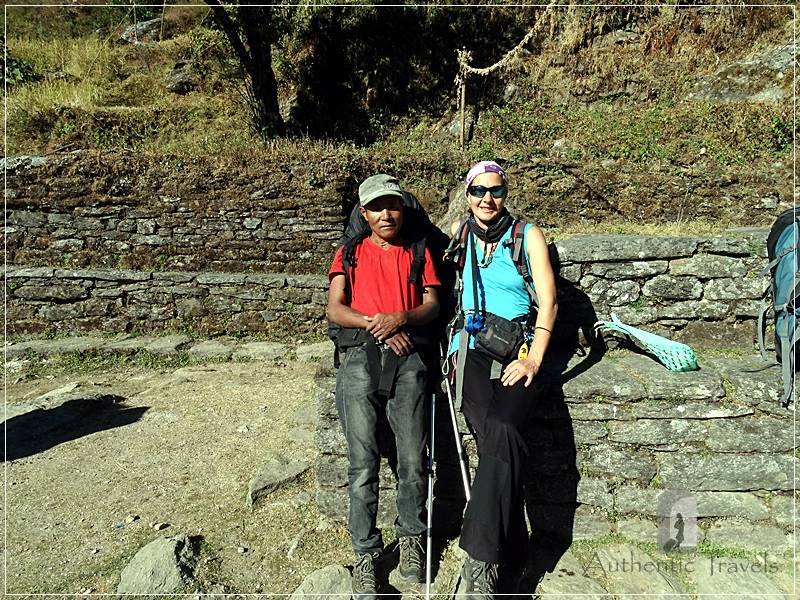
Wow — what a trek!! With all those amazing views, it looks so worth it! I love that you encountered so many adorable animals along the way! 🙂
Sometimes you act like a child when you see monkeys, donkeys, and the list may go on.
What a stunning adventure! The longest hiking trek I’ve done is four days on the Inca Trail, but next year my husband and I take off for a (hopefully) 12-month trip! We’re hoping to do the APBC Trek and this has been loads of inspiration. Photos of those Tibetan jewels shows me I need to save a little room in my pack for trinkets – I’m a sucker for those things!
Be prepared for steep and long ups and downs as the Himalayas are the highest mountains in the world for a certain reason: they are very abrupt. I also love Tibetan jewels but they were so heavy and expensive at that altitude, that you’d better negotiate and buy them in Pokhara.